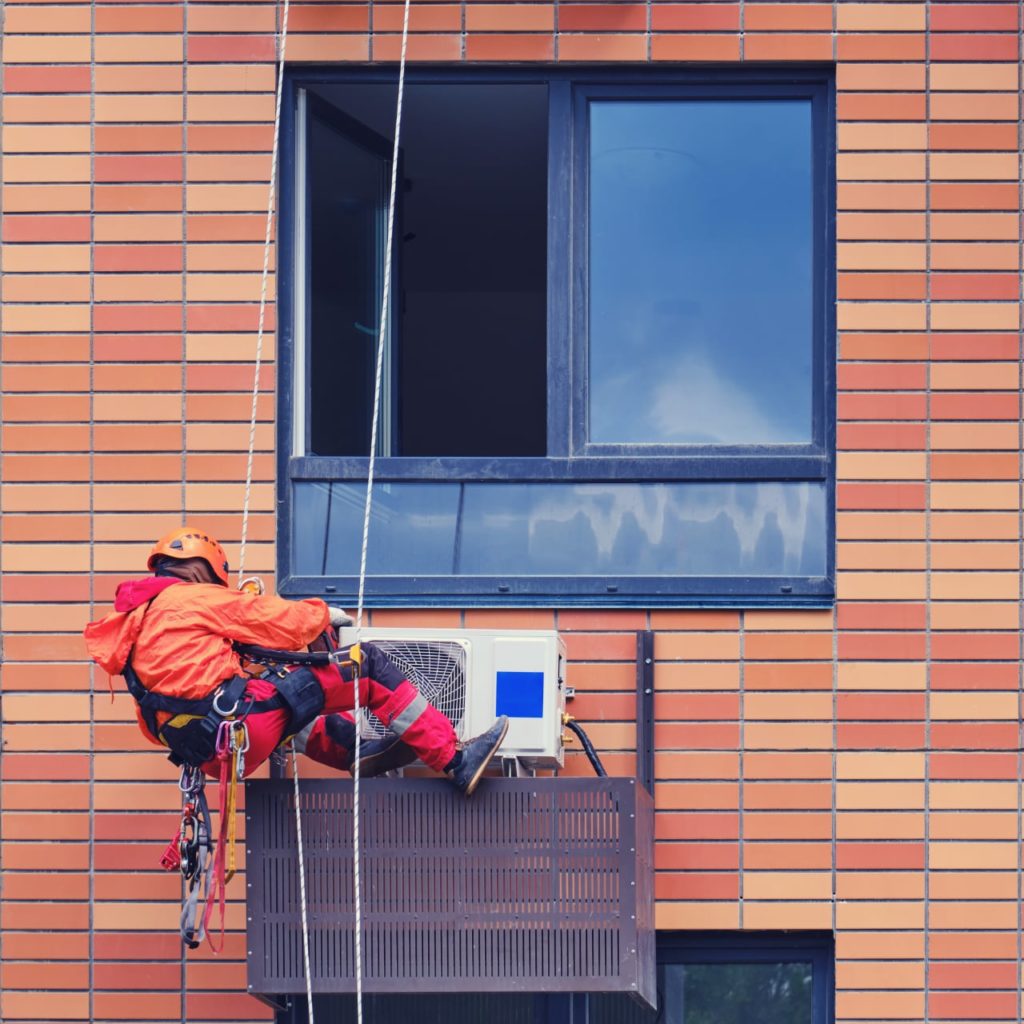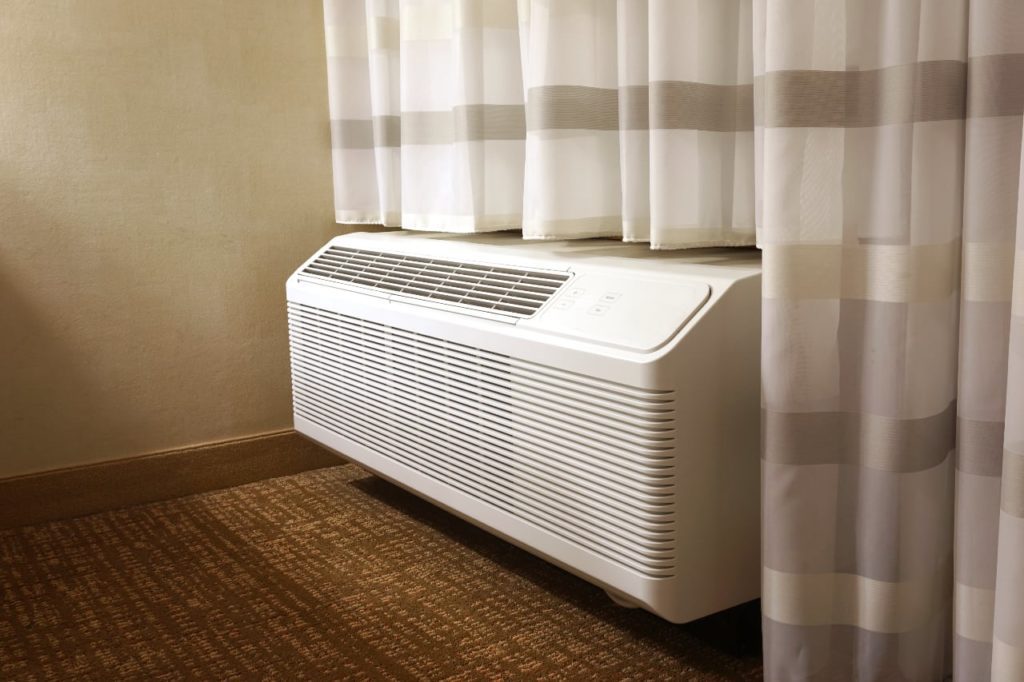If you’re often staying in hotels for your business travels and vacation trips, a packaged terminal air conditioner (PTAC) may look familiar to you. The PTAC units look exactly like your typical air conditioners. Perhaps the most telling sign is where they’re located; a PTAC is usually placed through a wall and right above or under a window.
They’re often used in accommodation and healthcare facilities because they’re proven to be cost-effective and easy to install, as well as maintain. With these benefits, more residents are choosing to buy a PTAC unit for their cooling and heating needs, too.
Yes, you heard that right. PTAC models may be used whether you want to keep warm or cool. In this article, we’re going to discuss the basics of PTAC units by learning more about them, how they work, and their two major types.
What is a PTAC?
These dual-function appliances are commercial-level air conditioners that can operate independently from your building or residence’s central heating and cooling system. Hence, it allows you to manage temperatures in your room without affecting the temperature in the whole premise. This is one of the reasons why they’re preferred in commercial settings such as offices, hotels, hospitals, and other healthcare facilities.
Two Major Types of PTAC
Packaged terminal air conditioners are often classified into two major types, depending on how it produces heat and cools down. Comparing a PTAC heat pump vs electric heat is the first step in understanding PTAC units.
1. PTACs with Electric Heat
How does it work?
As its name implies, this type of appliance utilizes electricity and its own heating components to warm the air as it passes over the heating component. To ensure a more serious heating power, another heating device is typically built-in near the vent of a PTAC unit. A powerful fan then distributes the warm air around the room or your living space. The unit also works in the same way when used as an air conditioner to cool you down.
How does it fare vs the other type?
Electric heat-driven PTACs are typically cheaper than units with heat pumps. However, because they’re less energy efficient than its counterpart, the upfront costs you save will likely be compensated by your electricity bill.
Compared to a heat pump, PTACs electric heat appliance models tend to operate with less noise. The latter also tends to last longer than the former.
Perhaps the major draw for this type of appliance is its more powerful heating power, making it the better choice for areas prone to the harsh winter weather. A PTAC with electric heat will continue to function even in the lowest temperatures, so your family can feel comfortable and cozy despite the blizzard outside.
2. PTACs with Heat Pumps
How does it work?
The other PTAC variety uses heat pumps that reverse the cooling cycle in order to supply warm air to your room. These units have four-way valves that manage the movement of refrigerants. Heat pump-driven units utilize refrigerants to heat the coils. When the air passes over the hot coils, the warm air that it generates is dispersed towards your living space.

How does it fare vs the other type?
Because of its limited heating power, which typically touches down to only 40 degrees Fahrenheit, a PTAC with a heat pump is typically used in warmer temperatures. In some instances, establishments that have heat-pump PTACs have electric heat to back up their heating needs during the winter season.
This type of appliance is more expensive than electric heat-driven PTAC. However, you’ll save on electricity costs in the long run. The downside? It’s not as equally effective as its counterpart in warming you up in extremely cold weather.
Whichever you choose, one of the keys to extending your appliance’s life span is having your air conditioning unit regularly serviced.
Differences in Commercial and Residential PTAC units
Because commercial and residential consumers of PTCAs have different needs, PTAC units may differ based on the following:
- Size: As with other things, a largerPTAC also means bigger cooling and heating capacities. Residential PTAC units are smaller compared to the PTACs you see in hospitals and hotels, and other establishments.
- System Complexity: Residential PTACs are simple and easy to install. Commercial-use PTACs, on the other hand, require careful consideration in terms of workplace needs and building requirements.
- Filters: Air filters in cooling units are used to increase a unit’s efficiency and life span by keeping away dust, air particles, and pollutants. Basic air filters are used in homes while a more advanced filtering system is recommended for industrial and commercial uses.
- Design: Domestic-use PTACs are stand-alone, while commercial-use PTACs look more complicated as they come in modular systems to address the high cooling and heating demands.
- Drainage: The condensed water from PTACs needs to be drained regularly. Residential PTAC only needs a pan and a single drain pipe, whereas industrial units need several pipes and more catcher pans for the overflow.
Final Thoughts
Packaged terminal air conditioners are manufactured while keeping in mind the needs of various customer segments. If you’re planning to use a PTAC as your main source of heat, it’s better to opt for an electric heater type. On the other hand, choose the heat pump-type when you’re living in a warmer area with mild winter weather.



